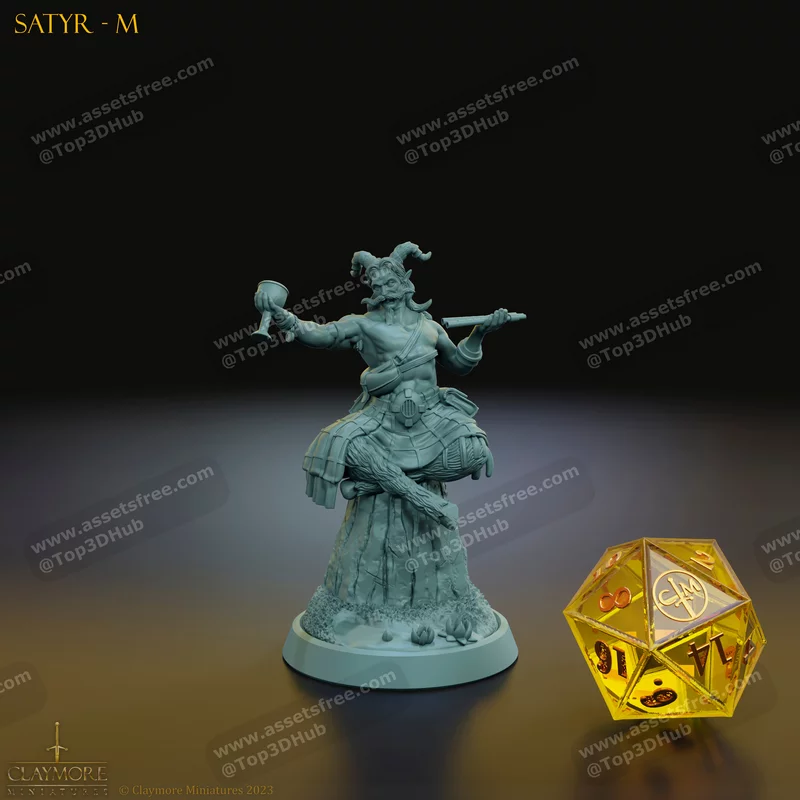
Satyr – 3D print model STL
3D Print File Format: STL
Satyrs, also known as fauns in Roman mythology, are mythical creatures from Greek mythology with a unique and often playful nature. They are often associated with the god Dionysus (Bacchus in Roman mythology) and are typically depicted as half-human, half-goat beings. Here are key details about satyrs:
1. **Physical Characteristics:** Satyrs are characterized by their hybrid appearance. They have the upper body of a human, including a human face, but the lower body of a goat, with hooves and sometimes a tail. They often have pointed ears and are usually depicted with a mischievous or playful expression.
2. **Companions of Dionysus:** Satyrs are closely associated with the god of wine, Dionysus, and are often depicted as his loyal companions. They are known for their love of revelry, wine, music, and dance, and they frequently join Dionysus in his wild celebrations.
3. **Pan and Silenus:** Two famous satyrs in Greek mythology are Pan and Silenus. Pan, known for his love of music and playing the panpipes, is sometimes referred to as the “god of the wild.” Silenus is often depicted as an elderly and drunken satyr who serves as a tutor and advisor to Dionysus.
4. **Dionysian Festivals:** Satyrs played a role in Dionysian festivals and rituals, where they would dance, sing, and engage in ecstatic revelry. These festivals celebrated the pleasures of the senses and the release of inhibitions.
5. **Fertility Symbols:** Satyrs are sometimes seen as symbols of fertility, given their association with the untamed aspects of nature and the wild. They were often depicted in scenes involving fertility rites and nature worship.
6. **Art and Literature:** Satyrs have been popular subjects in art and literature throughout history. They appear in ancient Greek pottery, sculptures, and vase paintings. They also feature in classical works of literature, such as the plays of Euripides and the pastoral poetry of Theocritus.
7. **Influence on Later Folklore:** The concept of satyrs influenced later folklore and mythological creatures, including the fauns of Roman mythology and the woodwoses of medieval European folklore.
8. **Modern Interpretations:** Satyrs continue to appear in various forms in contemporary literature, art, and popular culture, often embodying themes of primal instinct, desire, and the untamed aspects of human nature.
Satyrs are emblematic of the joyful and carefree aspects of life and have left an enduring mark on the world of mythology and cultural expression.


